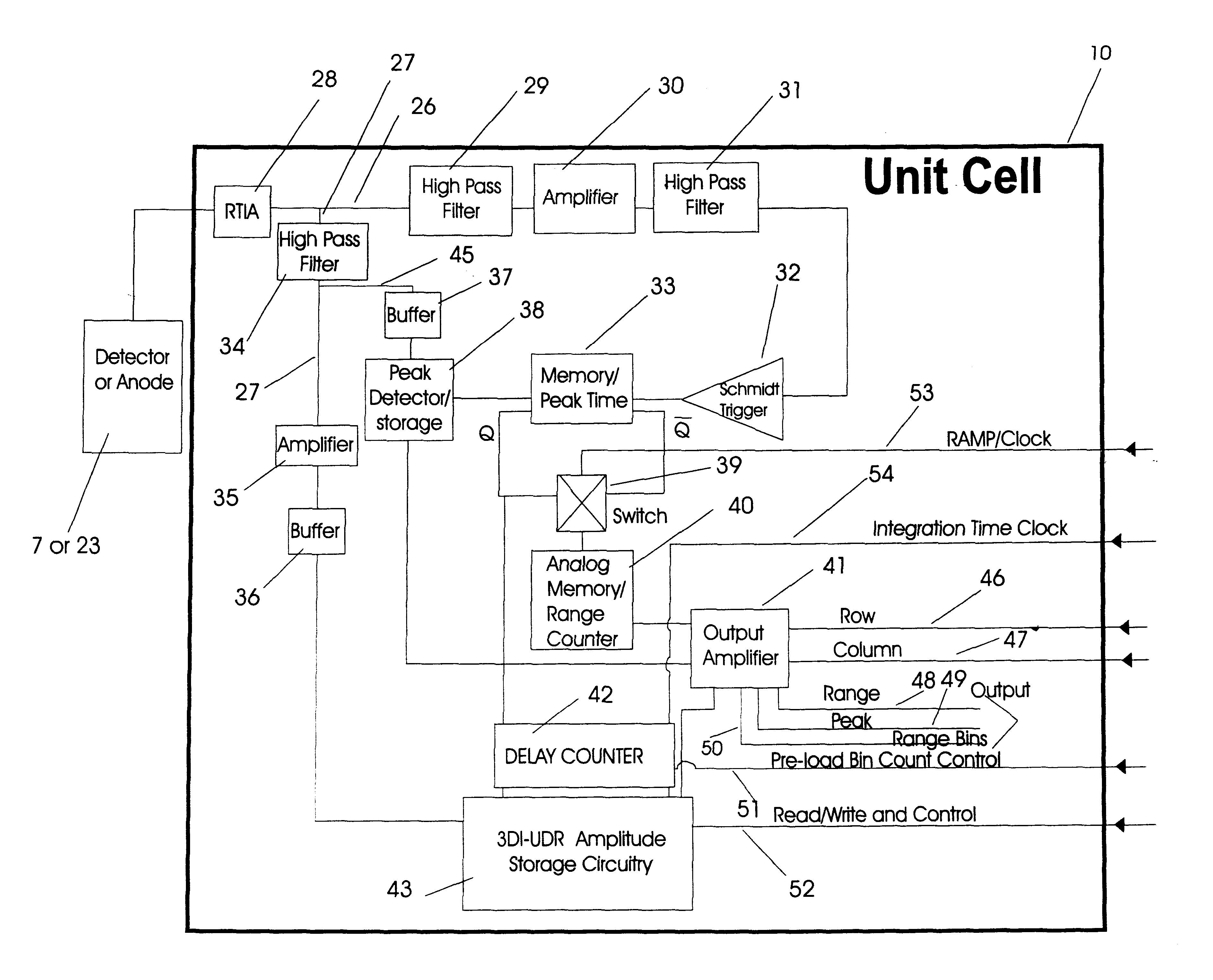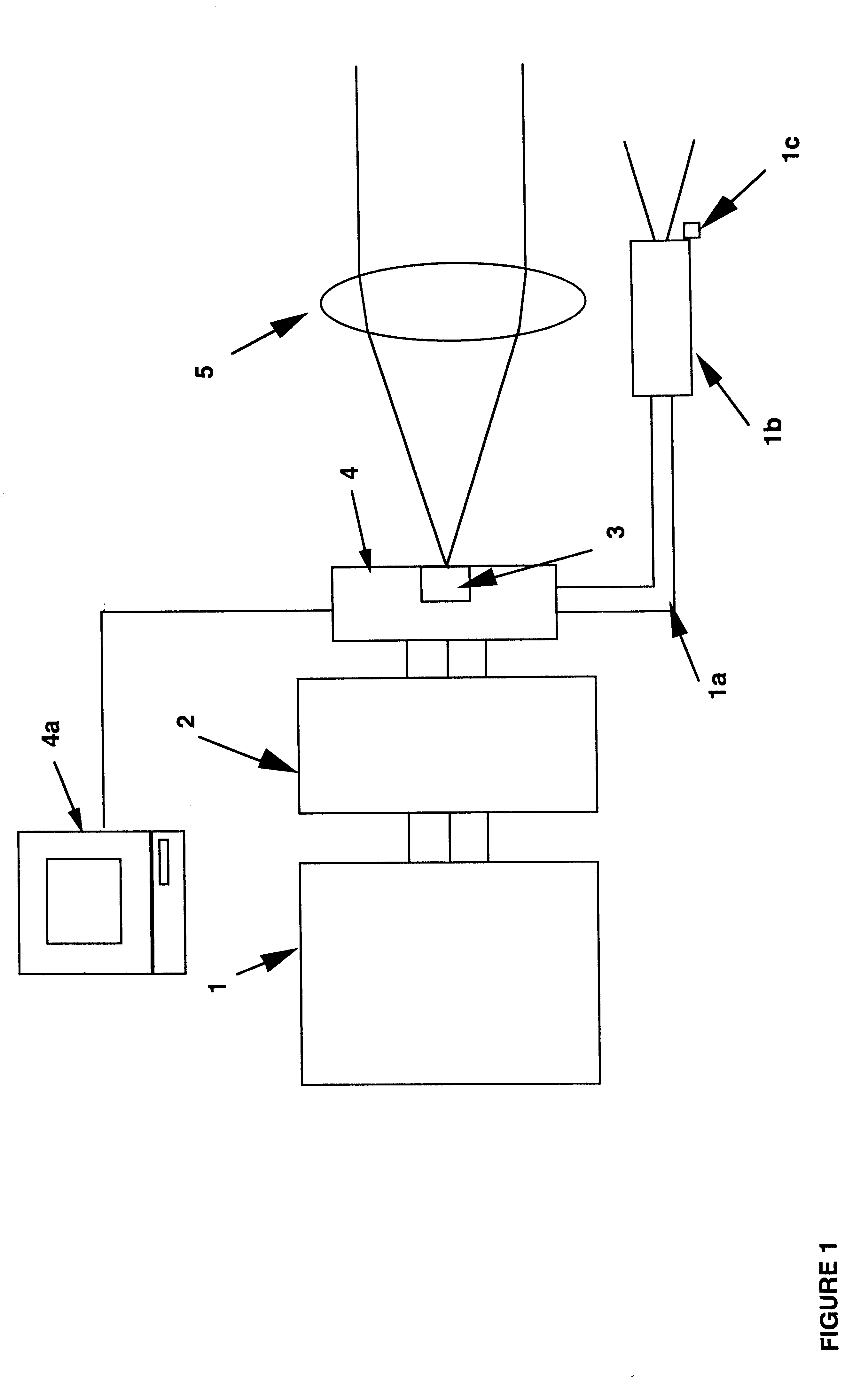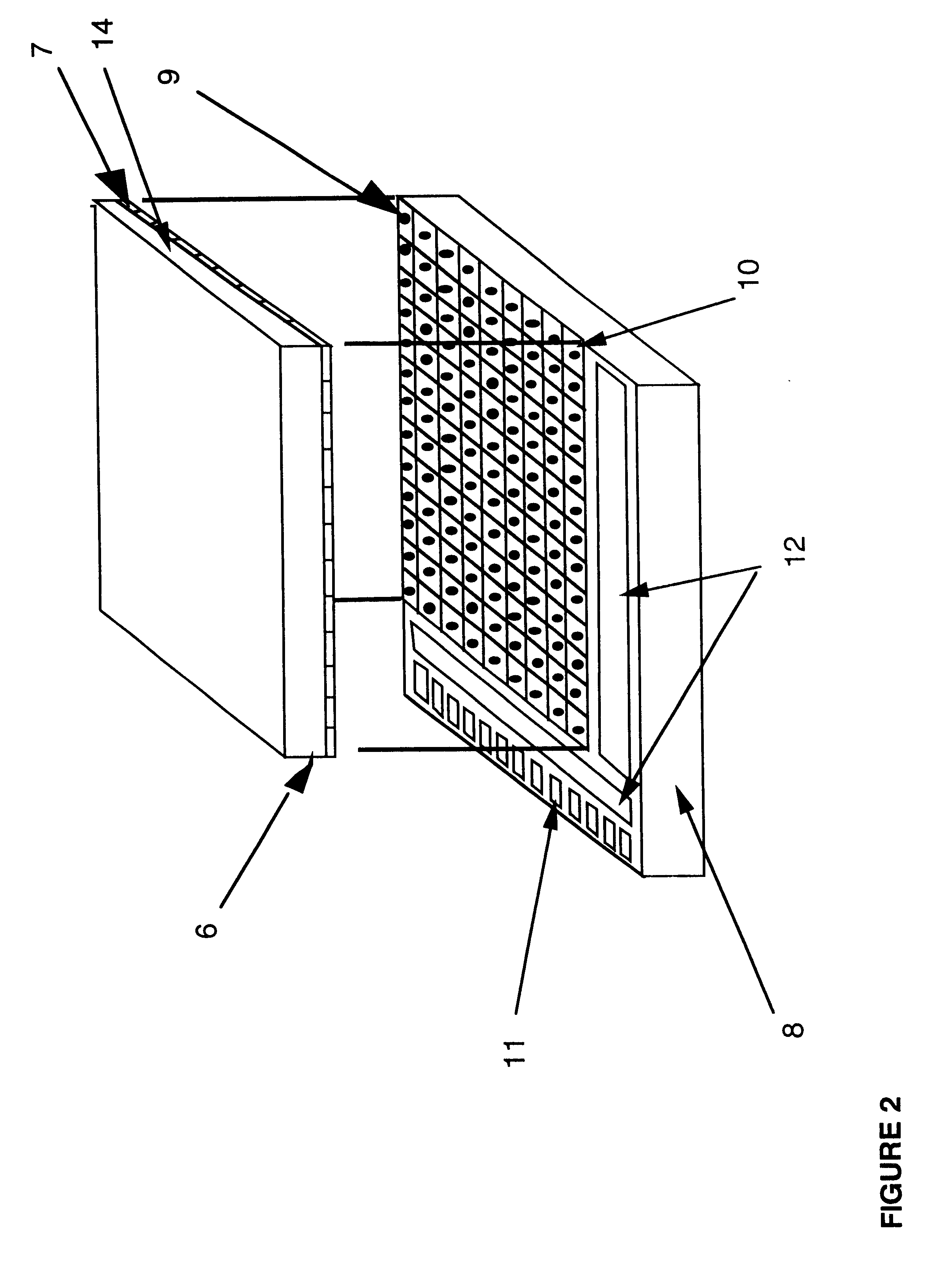3-D imaging multiple target laser radar
a laser radar and multiple target technology, applied in the direction of reradiation, distance measurement, instruments, etc., can solve the problems of cumbersome mechanical scanners, complex pixel-registration computer processing, slow rastering process, etc., and achieve the effect of accurate determination
- Summary
- Abstract
- Description
- Claims
- Application Information
AI Technical Summary
Benefits of technology
Problems solved by technology
Method used
Image
Examples
Embodiment Construction
A preferred embodiment of the present invention, the Penetrating 3-D Ladar (PDAR) imaging system depicted in FIG. 1, is designed to produce three-dimensional image data (area and range) from a single laser pulse reflected from objects in the atmosphere, located in or behind obscurants, using transit time and / or amplitude information, and process the data to form a three dimensional image. Six parts make up the preferred embodiment of the invention; a pulsed laser 1, with delivery system 1a, collimator 1b and laser transmission detector 1c; the data processing and laser control system 2; the sensor 3, and associated Drive and Output Electronics 4, and the optics 5. The Drive and Output Electronics 4 is electrically connected to an image processing computer 4a.
FIG. 2 shows one sensor design 3, a hybrid sensor, in greater detail. It consists of a detector array chip 6, composed of individual detectors 7, the laser radar processor chip 8, and conducting bumps 9, which electrically conne...
PUM
 Login to View More
Login to View More Abstract
Description
Claims
Application Information
 Login to View More
Login to View More - R&D
- Intellectual Property
- Life Sciences
- Materials
- Tech Scout
- Unparalleled Data Quality
- Higher Quality Content
- 60% Fewer Hallucinations
Browse by: Latest US Patents, China's latest patents, Technical Efficacy Thesaurus, Application Domain, Technology Topic, Popular Technical Reports.
© 2025 PatSnap. All rights reserved.Legal|Privacy policy|Modern Slavery Act Transparency Statement|Sitemap|About US| Contact US: help@patsnap.com



